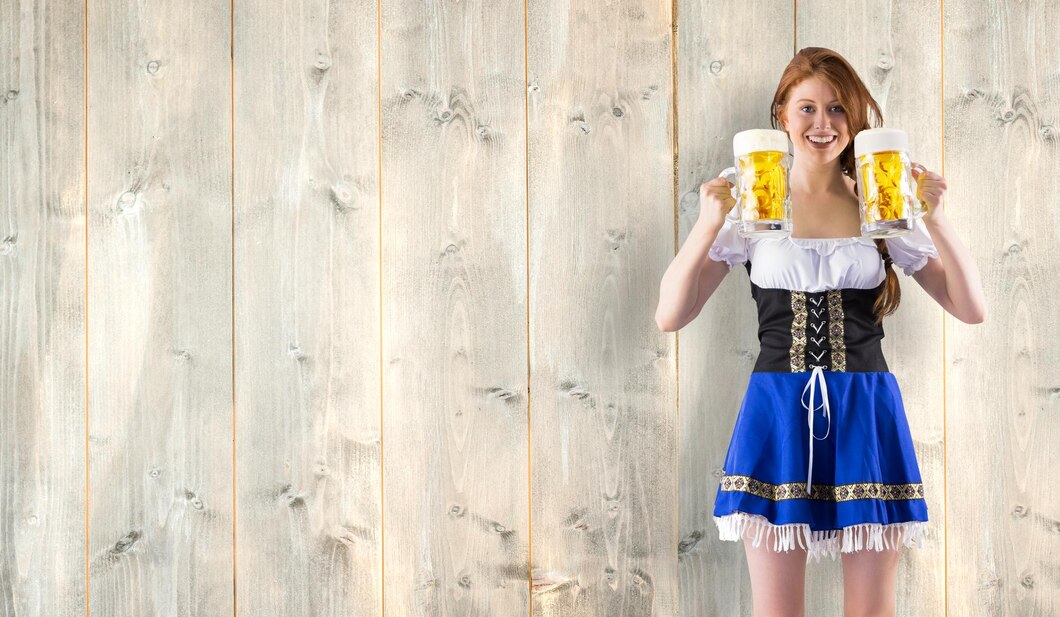Oktoberfest is an annual rendition of beer celebration with massive carnival rides in Munich since 1810. This Bavarian Beerfest, which started as a wedding, transformed into a massive carnival, pulling in 71% of the locals and 29% of outsiders. What is fascinating about this “amongst top ten celebrations” is the sea of people wearing the same local traditional attire, “Authentic Lederhosen.” Oktoberfest and Lederhosen have a close association, and it’s beyond the glitz and glam.
Evolution of Lederhosen Along Oktoberfest
The association of leather breeches with Oktoberfest can be traced back to the 19th century. Crafted initially for work purposes due to their versatility and toughness, the leather breeches became popular among the elites of Bavaria. Lederhosen was seen on the grounds for horse racing and achieved a great status in the reign of King Ludwig, who wore it for horse riding.
During the first iteration of Oktoberfest, the lederhosen was part of this festivity, as the images from the wedding of King Ludwig and Therese clearly show men dressed in lederhosen. After toing and froing for years, Lederhosen has finally become the face of OKtoberfest, especially after its growing popularity since the start of the 21st century.
Reasons Lederhosen & Oktoberfest are Linked
Authentic Lederhosen has been associated with Oktoberfest because of multiple reasons.
King Ludwig Association with Okotberfest & Lederhosen
Many don’t know that Oktoberfest was never about beer and bratwurst. It started as a wedding, which was very different from the Oktoberfest we see today. The first season was all about horse racing, with a choir performance of students of the “Feiertagsschule” to honor the king and queen. Over the years, the Oktoberfest transformed into a carnival with Oktoberfest tents, food vendors, and giant carnival rides. The association of Oktoberfest with King Ludwig was of grave importance.
King Ludwig II lend Bavarian Lederhosen support during its dark times, especially in the late 19th century. With the support of his highness and the elite of Bavaria, the Lederhosen preservation campaign started and led to the formation of the Trachtenvereine. King Ludwig frequented his visit to the Alps in the leather breeches. His association with Oktoberfest (his marriage became the reason for Wiesn) and his support for Lederhosen tied both, and thus, one of the most important reasons why Lederhosen is worn on Oktoberfest.
Oktoberfest: A Stage for Representing the Bavarian Tracht
The foundation of Oktoberfest is laid on the pillars of traditions, and the oldest and the most significant cultural entity is undoubtedly the “Lederhosen.” Only Bavarian beer is served at the Wiesn. Thus, it also required cultural representation on the clothing front, where Bavarian leather breeches came to the rescue. Right when efforts were made to preserve the trachten leather pants, they were recognized as the “traditional Bavarian costume,” along with their counterpart, the Dirndl dress.
Oktoberfest, the festival that originated in Bavaria, and so did the leather shorts with the front drop. The embroidery on the leather breeches signifies a unique message, and all the motifs are symbolic of Bavarian culture.
- Edelweiss flower: Edelweiss flower on the Lederhosen signifies “nobility” or “purity.”
- Oak leaves: Oak leaves symbolize “heroism.”
- Mighty stag: The mighty stag on the lederhosen means valor and bravery. It was often adorned on the nobility lederhosen.
- The coat of arms: The crest on the leather breeches symbolizes the royal progeny.
Lederhosen are Beer Stein Proof
We all know how big beer is at Oktoberfest; only Munich beer, following strict purity law, is brewed for the Oktoberfest. Beer stains are tough, and only Bavarian Leather breeches can withstand the tough beer stains and be ready for the next Oktoberfest with just a little maintenance—NO BETTER CHOICE THAN LEDERHOSEN FOR BEER CELEBRATIONS.
Getting Recognition Worldwide
Oktoberfest started to gain popularity worldwide, with massive beerfest celebrations taking place in the United States, China, Australia, New Zealand, and Canada. What’s better than promoting your own tracht on your very own festivals?
Besides this, Lederhosen men has also become an international affair, with its manufacturing factories situated in India, Sri Lanka, and Hungary, and its leather is sourced from Pakistan and New Zealand. The promotion and association of Lederhosen and Oktoberfest internationally go hand in hand, fulfilling all the angles of traditionalism at any festival.
Getting recognized internationally gave more reason “to wear lederhosen on Oktoberfest.”
Significance of Lederhosen at Oktoberfest
Lederhosen are significantly popular at Oktoberfest, to the point that the whole parade, with the name “the traditional costume and hunter,” is a major segment of Oktoberfest. The Trachten—und Schützenzug (German parlance) is a nearly seven-kilometer-long parade on the first Sunday of Oktoberfest, featuring traditional costumes, music, and performances.
Starting around 10 a.m. at the Max II Monument, participants proudly display their heritage through trachten clothing, enthusiastic greetings to the crowds, and even acrobatic displays like the Munich Morris dancers. The festive atmosphere is amplified by the lively music of numerous brass and marching bands performing traditional folk and marching tunes.
WRAPPING IT UP!
There is a reason Lederhosen can be seen everywhere, and 90% of the Oktoberfest garb is in these traditional trachten shorts. Lederhosen is the symbol of cultural heritage and the strongest and oldest pillar of Bavaria, and Oktoberfest is all about celebrating Bavarian traditions. Elites like King Ludwig II have advocated for lederhosen to be a national symbol of pride. Oktoberfest became an international affair, which was another reason Lederhosen gained popularity as an unofficial dress for Wiesn.
FAQs
What are Oktoberfest Traditions?
Oktoberfest has evolved with time, and many things have changed, some of which have made permanent room for themselves. In the ongoing iterations of Oktoberfest, Bavarian food, Munich-brewed beer, and traditional tracht (authentic lederhosen and dirndl) are the core traditions of Oktoberfest.
What is the goal of Oktoberfest?
Oktoberfest celebrates Bavarian culture by bringing people together in lederhosen. Although it is the jovial time of the year, it contributes a massive 2% to Munich’s GDP and generates 1.25 billion euros in revenue.










